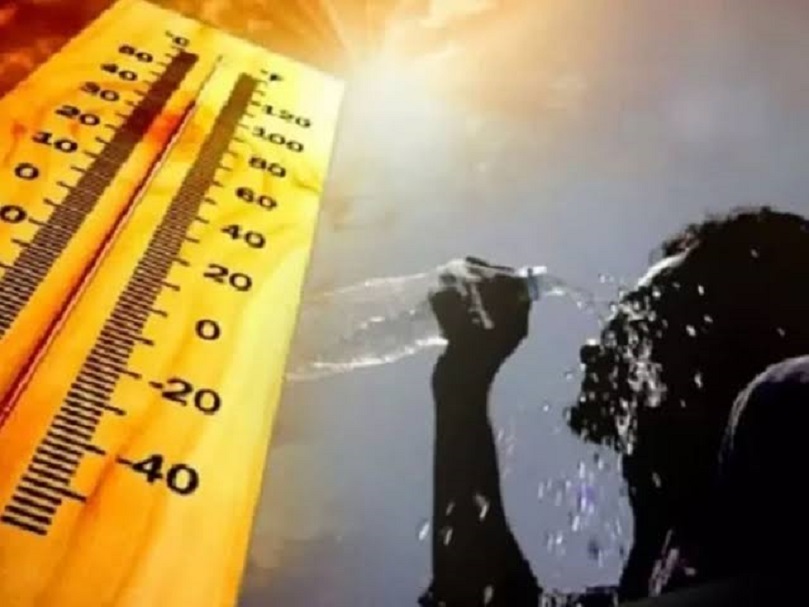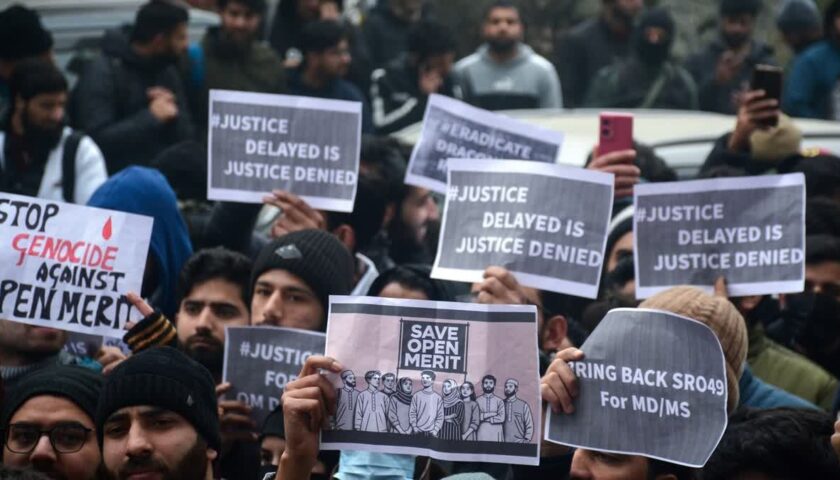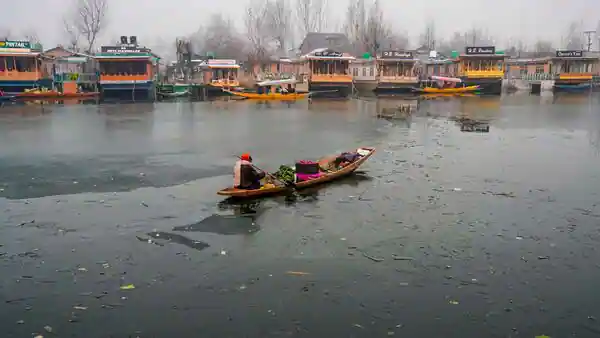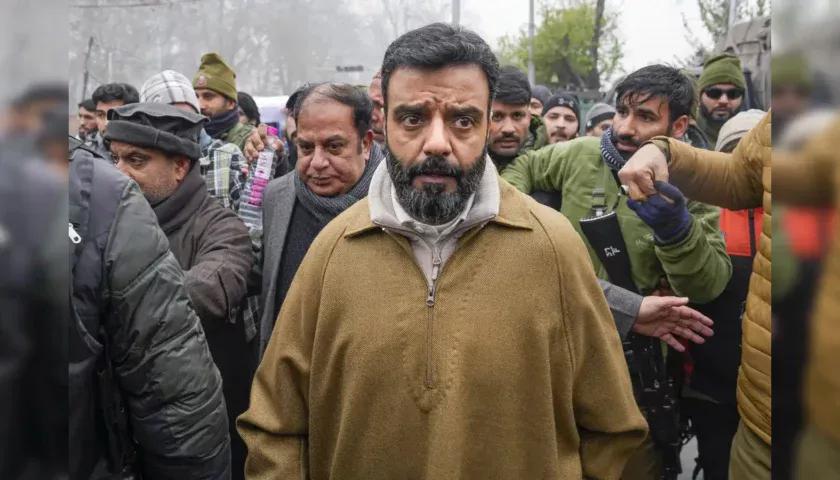Why 35°C in Kashmir Feels Like 50°C: Urban Heat Islands, Climate Change, and Valley Traps
By: Javid Amin | Srinagar | 05 July 2025
Kashmir’s Cool Reputation is Melting
Once known for its cool summers and fresh breezes, Kashmir is now sizzling. On paper, the temperature in Srinagar hits 35°C, but step outside and it feels like walking into a furnace. Why? Because it’s not just about the number on the thermometer—it’s about how your body experiences heat in a changing landscape.
Welcome to Kashmir’s new climate reality, where 35°C often feels like 50°C, and the Valley’s natural cooling systems are breaking down. In this deep-dive editorial, we unpack the hidden science, human consequences, and ecological costs behind this dangerous heat illusion.
Urban Heat Islands: Kashmir’s Concrete Pressure Cookers
Concrete Jungles Replacing Chinars
Srinagar and other towns across Kashmir are urbanizing rapidly. Asphalt roads, cement buildings, parking lots, and glass malls have replaced trees, wetlands, and open fields.
These materials absorb heat during the day and release it slowly at night, preventing the temperature from cooling down. This phenomenon is called the Urban Heat Island (UHI) effect.
The UHI Effect in Kashmir
-
Central Srinagar is up to 4°C hotter than its rural fringes like Harwan or Ganderbal.
-
Night temperatures don’t drop, stressing the human body and reducing recovery from daytime heat.
-
Lack of green spaces and water bodies worsens the heat retention.
Dr. Bilal Ahmad, an environmental engineer from NIT Srinagar, says:
“If you walk barefoot on Lal Chowk tiles at 2 PM, it’s like stepping on a tandoor. This heat isn’t natural—it’s man-made.”
Trapped Heat: Geography That Works Against Relief
Kashmir’s geography is its blessing—and curse. Nestled in a bowl-shaped valley surrounded by mountains, the region becomes a trap for solar radiation during hot spells.
Bowl-Shaped Trap
-
Warm air enters but has trouble escaping, especially under stagnant wind conditions.
-
With low wind speeds and clear skies, the sun directly heats the ground with minimal dispersion.
During the day:
-
Solar radiation heats rooftops, vehicles, and bare soil.
-
With no clouds or trees to offer shade, the ground becomes a heat mirror.
At night:
-
The trapped heat lingers, keeping temperatures high even after sunset.
This makes 35°C in Kashmir feel far worse than the same temperature in plains like Delhi, which at least benefit from open terrain and wind movement.
Wet-Bulb Temperature & Humidity: The Real Danger
We often measure heat using a regular thermometer, but your body reacts to something else entirely—the Wet-Bulb Temperature (WBT).
What is Wet-Bulb Temperature?
-
It combines air temperature and humidity to measure how effectively your body can cool itself through sweating.
-
If sweat doesn’t evaporate, your body retains heat, leading to heat exhaustion or even death.
Kashmir’s Wet-Bulb Red Zone
-
In recent weeks, Srinagar’s WBT has approached 27°C, nearing the danger threshold of 29°C.
-
Above 31°C WBT, even healthy people cannot survive outdoors for long.
“The body loses its ability to cool. This isn’t just uncomfortable—it’s fatal,” warns Dr. Zameer Wani, a physician at SMHS Hospital.
Children, elderly, and people with heart conditions are at highest risk, especially in poorly ventilated classrooms, tin-roofed homes, and crowded hospitals.
Deforestation: Cooling Canopy Lost
Kashmir’s famed forests—once a natural air conditioner—are vanishing at an alarming rate.
The Statistics:
-
Kashmir has lost 15% of its green cover since the early 2000s.
-
From lush pine forests in Kupwara to willow belts around Srinagar, deforestation is rampant due to:
-
Road widening
-
Illegal logging
-
Commercial encroachments
-
Population expansion
-
How Forests Cool Us
Trees don’t just provide shade—they release moisture into the air through evapotranspiration, lowering both air temperature and humidity.
Without trees:
-
Soil heats faster
-
Air circulation slows
-
Heatwaves last longer
Urban forests and rural groves, once a natural buffer against sun, are now replaced with tiles, metal roofs, and billboards.
Rainfall Deficit: The Sky Refuses to Help
Rain acts as a natural temperature moderator—but in recent years, Kashmir is seeing drier summers and erratic rainfall.
Rainfall in Decline
-
The Valley has seen a 26% drop in seasonal rainfall, according to IMD.
-
April–June, which typically provides soil moisture and pre-monsoon showers, is now seeing long dry spells.
Consequences of Dry Weather
-
Dry soil reflects less sunlight and absorbs more heat
-
Humidity drops, but not enough to improve cooling
-
Rain-cooled nights, once common in Srinagar, are now rare and brief
Farmers across Pulwama, Anantnag, and Budgam report that streams are drying early, affecting both irrigation and microclimates.
Glacier Loss: Kashmir’s Snow Shield is Melting
The Himalayas are heating up twice as fast as the global average. One of the most dangerous fallouts? The melting of glaciers and loss of snow cover.
White to Brown: Albedo Effect Disrupted
Snow reflects sunlight—a property known as the albedo effect. When snow melts:
-
It exposes brown earth or rock
-
These darker surfaces absorb more heat
-
Warming accelerates, triggering a feedback loop
Implications for Kashmir
-
Rivers like the Jhelum and Lidder now peak earlier in summer, drying up during late June and July.
-
Dal Lake and Wular face reduced inflow and increasing eutrophication.
-
Groundwater recharge has plummeted, reducing cooling in rural zones.
Psychological Heat: When the Body Feels Hotter Than It Is
Beyond physical impact, heat also affects mental health and perception.
Heat Fatigue & Anxiety
-
Prolonged exposure to heat without relief increases anxiety, irritability, and confusion.
-
Students and teachers in hot classrooms report declining attention spans.
-
Manual laborers in fields and construction sites suffer from heat rage—a combination of fatigue and aggression triggered by chronic exposure.
35°C becomes unbearable not just physically—but mentally, turning daily tasks into psychological battles.
What Can Be Done: A Blueprint for Cooler Kashmir
1. Urban Cooling Strategies
-
Introduce green roofs and vertical gardens
-
Build urban forests in Srinagar, Anantnag, and Baramulla
-
Switch to light-colored pavements that reflect heat
2. Rainwater Harvesting
-
Promote rooftop water collection in schools and homes
-
Recharge dry borewells and canals with stored rainwater
3. Forest Restoration
-
Replant Chinar, Deodar, and Willow belts
-
Ban illegal tree cutting near rivers and lakes
-
Incentivize community-led reforestation
4. Heatwave Protocols for Schools & Workplaces
-
Morning-only classes during extreme heat
-
Mandatory cooling breaks
-
Distribute ORS, shaded tents, and hydration stations
5. Early Warning & Monitoring
-
Install weather sensors in every district
-
Send heat alerts via mobile apps and radio
-
Educate public on WBT dangers and first-aid for heatstroke
Voices from the Valley
Nighat Jan, Teacher from Pulwama:
“We have no fans, no cold water, and our school building has a tin roof. It’s like teaching inside an oven.”
Dr. Zahoor Mir, Environmental Scientist:
“The day we stop planting malls and start planting trees, Kashmir will begin to cool down again.”
Rayees Ahmad, Auto Driver:
“I drive 8 hours a day. This heat burns my skin. Even my steering wheel is hot to touch.”
Bottom-Line: 35°C Is Just a Number—The Reality Is Hotter
In a valley where snow-capped peaks once symbolized relief, we are now entering a future where heat is relentless, silent, and deadly. 35°C in Kashmir is not the same as 35°C elsewhere.
It’s time we understand the science behind this “felt heat,” not just the readings on weather apps.
If Kashmir must survive the coming decades, it needs:
-
Trees more than tiles
-
Cool science more than cold comfort
-
Policies that reflect the pain beneath the numbers
Let’s not wait for 50°C to show up on thermometers before we act.




